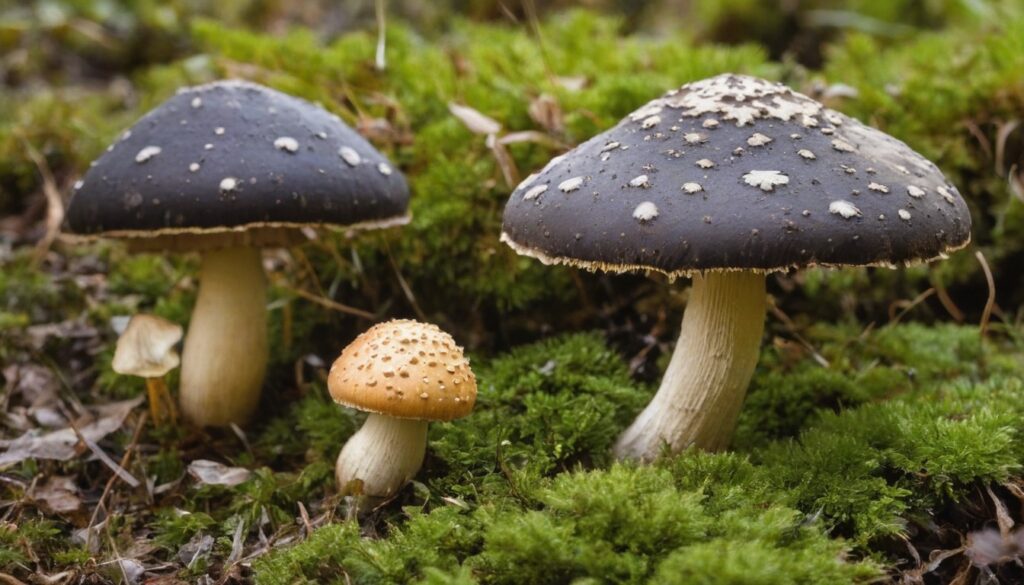When it comes to mushrooms, pretty isn’t always the norm. Ugly mushrooms, also known as odd-shaped fungi, are often overlooked for their unconventional appearance. But beneath their unappealing exterior lies a unique charm that is worth exploring. From their diverse habitats to their culinary potential and ecological significance, ugly mushrooms have a lot to offer. In this article, we’ll delve into the fascinating world of ugly mushrooms and uncover their beauty beyond the odd shapes.
Key Takeaways:
- Ugly mushrooms often have unconventional shapes but are full of unique charm.
- Despite their appearance, they play an important role in the ecosystem.
- Ugly mushrooms offer incredible culinary possibilities for adventurous food lovers.
- They have numerous health benefits, including medicinal properties.
- Identifying ugly mushrooms can be safe and easy, provided you know what to look for.
The Fascinating World of Ugly Mushrooms
Welcome to the fascinating world of ugly mushrooms! Despite their unconventional appearance, these fungi are a diverse and essential part of the natural world. They can be found in a variety of habitats, including forests, grasslands, and even deserts.
Ugly mushrooms play a vital role in the ecosystem, as decomposers and nutrient recyclers. They help break down dead organic matter, releasing essential nutrients back into the soil and sustaining plant growth. They also have symbiotic relationships with certain tree species, exchanging nutrients for carbohydrates and providing vital support to the trees’ root systems.
The world of ugly mushrooms is vast and varied. From the colorful and psychedelic to the small and unassuming, there is a plethora of species to explore. Some of the most well-known ugly mushrooms include the stinkhorn, the devils club, and the jelly fungus.
If you’re interested in learning more about these unique organisms, there are plenty of resources available online, as well as local mushroom clubs and foraging groups. So why not take a closer look into the amazing world of ugly mushrooms?
Unconventional Culinary Delights
Ugly mushrooms may not be the first thing that comes to mind when you think of culinary delights, but these odd-shaped fungi offer surprising and delightful flavors for adventurous food lovers. Their unique textures and extraordinary tastes make them stand out among other edible mushrooms.
One popular type of ugly mushroom is the Lion’s Mane, which has a delicate seafood-like flavor that works well in stir-fries and salads. Meanwhile, the meaty and flavorful Shiitake mushrooms are often used in Asian cuisine and can be sautéed, baked, or even grilled.
If you’re feeling even more adventurous, the Wood Ear mushroom might be to your taste. Often used in Chinese cuisine, these mushrooms have a jelly-like texture and a mild flavor that adds an interesting twist to soups and stir-fries.
“The unique flavors of ugly mushrooms may surprise even the most seasoned of chefs, making them a valuable addition to any culinary repertoire.”
To enjoy the full potential of these culinary delights, it’s essential to learn how to properly prepare and cook them. Each type of ugly mushroom has its unique characteristics, and some may require a bit of extra care before they’re ready to eat. However, with a bit of experimentation and open-mindedness, these odd-shaped fungi can be transformed into mouth-watering dishes that will impress even the most discerning of food critics.
Ugly Mushrooms Around the World
Ugly mushrooms are found all around the world and have significant cultural value. Let’s explore some of the prominent regions where these fungi can be found.
Region | Mushroom | Cultural Significance |
|---|---|---|
Asia | Stinky tofu mushroom | Used in traditional medicine for digestion and skin health. Also incorporated into Cantonese cuisine. |
Europe | Common earthball | Considered a delicacy in some European countries, often used in soups or roasted in the oven. |
Africa | Lion’s mane mushroom | Used for medicinal purposes in traditional African folklore. Also incorporated into local cuisine as an aphrodisiac. |
North America | Bear’s head mushroom | Incorporated into the traditional cooking of Native American tribes, used for medicinal properties such as anti-inflammatory effects. |
South America | Used in traditional medicine for respiratory issues and fever. Also incorporated into local cuisine as a meat substitute. |
Global Appeal of Ugly Mushrooms
Ugly mushrooms have a diverse range of uses; they’re used in cuisines, traditional medicine, and even folklore all over the world. These unique fungi offer tantalizing tastes and extraordinary nutritional benefits, making them a valuable ingredient in diverse cultural settings.
- The stinky tofu mushroom is added to hot pots and stews to add an umami flavor that contrasts with spicy soups in Cantonese cuisine.
- In Europe, common earthballs are made into soups or roasted in the oven with herbs, such as thyme and rosemary, for added flavor.
- The Lion’s mane mushroom is combined in sauce for spaghetti or steak to add a firm, lobster-like texture that’s also considered an aphrodisiac in some African communities.
- Bear’s head mushrooms are used to prepare tonics that are believed to have anti-inflammatory properties in North American traditional medicine.
- Puffball mushrooms are fried and served as a vegan meat substitute that’s high in protein content in South American cuisine.
Overall, the diverse cultural significance and culinary potential of ugly mushrooms make them a treasure trove to explore in various regions of the world.
Health Benefits of Ugly Mushrooms
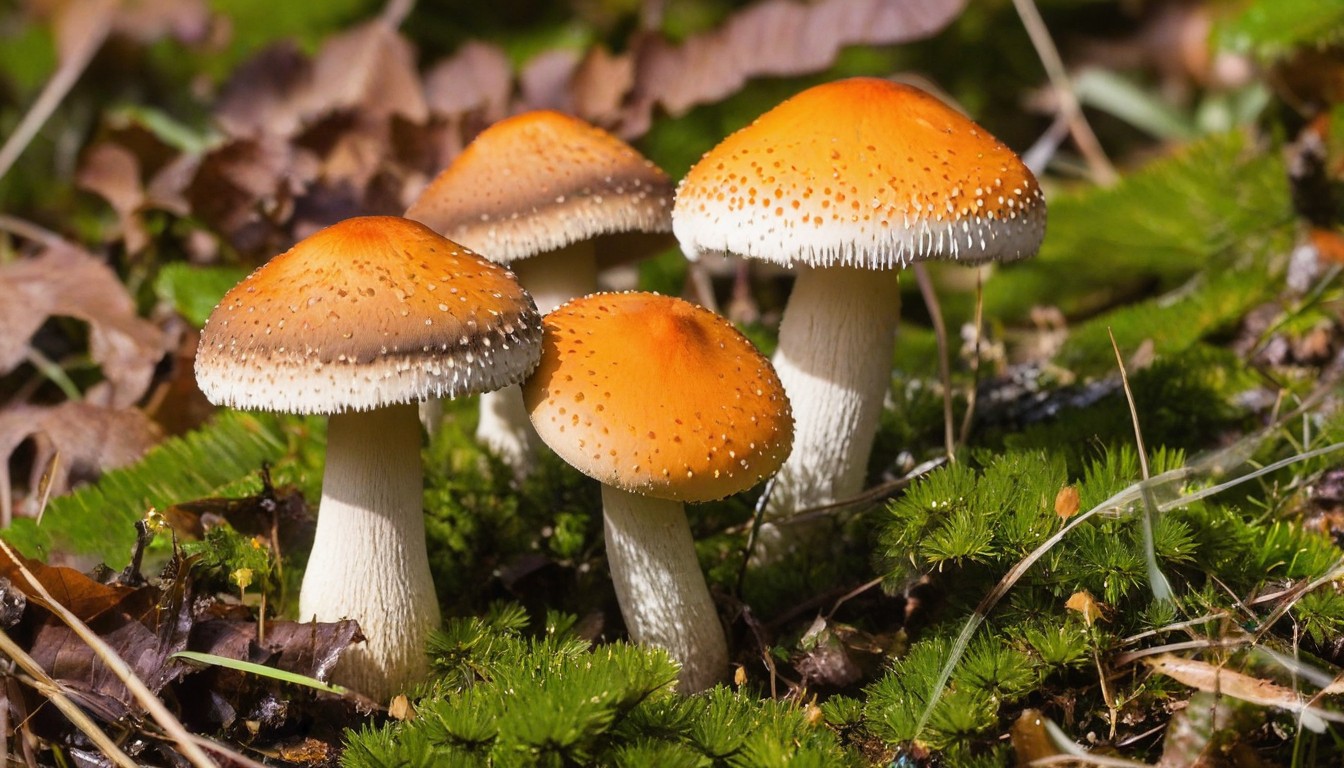
It’s no secret that a balanced diet rich in whole foods can provide numerous physical and mental health benefits. Ugly mushrooms, in particular, offer an array of nutritional and medicinal properties that can contribute to overall well-being.
Nutritional Value
Despite their unappealing appearances, ugly mushrooms are packed with essential vitamins and minerals. They are an excellent source of protein, fiber, and antioxidants. Plus, they provide a variety of B vitamins, including riboflavin, niacin, pantothenic acid, and folate. Ugly mushrooms are also low in calories, making them an ideal food for weight management.
Medicinal Properties
Ugly mushrooms have long been used in traditional medicine for their healing properties. They contain compounds such as beta-glucans, ergothioneine, and polysaccharides, which have been found to have immune-boosting, anti-inflammatory, and anti-cancer effects. Additionally, they may have anti-viral properties and support brain function.
Potential Contributions to Overall Well-Being
By incorporating ugly mushrooms into your diet, you can potentially experience a wide range of health benefits. From improving digestion and blood sugar levels to reducing inflammation and protecting against chronic diseases, the nutritional and medicinal properties of ugly mushrooms can help support your overall well-being.
HEALTH BENEFITS | UGLY MUSHROOMS | OTHER FOODS |
|---|---|---|
Protein | High | Varies |
Fiber | High | Varies |
Antioxidants | High | Varies |
B Vitamins | Rich source | Varies |
Calorie Content | Low | Varies |
Immune-Boosting | Contains beta-glucans and polysaccharides | Varies |
Anti-Inflammatory | Contains ergothioneine | Varies |
Anti-Cancer | Contains beta-glucans and polysaccharides | Varies |
So the next time you see an ugly mushroom, don’t let its appearance discourage you. Instead, embrace its unique beauty and take advantage of the many health benefits that these fungi have to offer.
Tips for Identifying Ugly Mushrooms
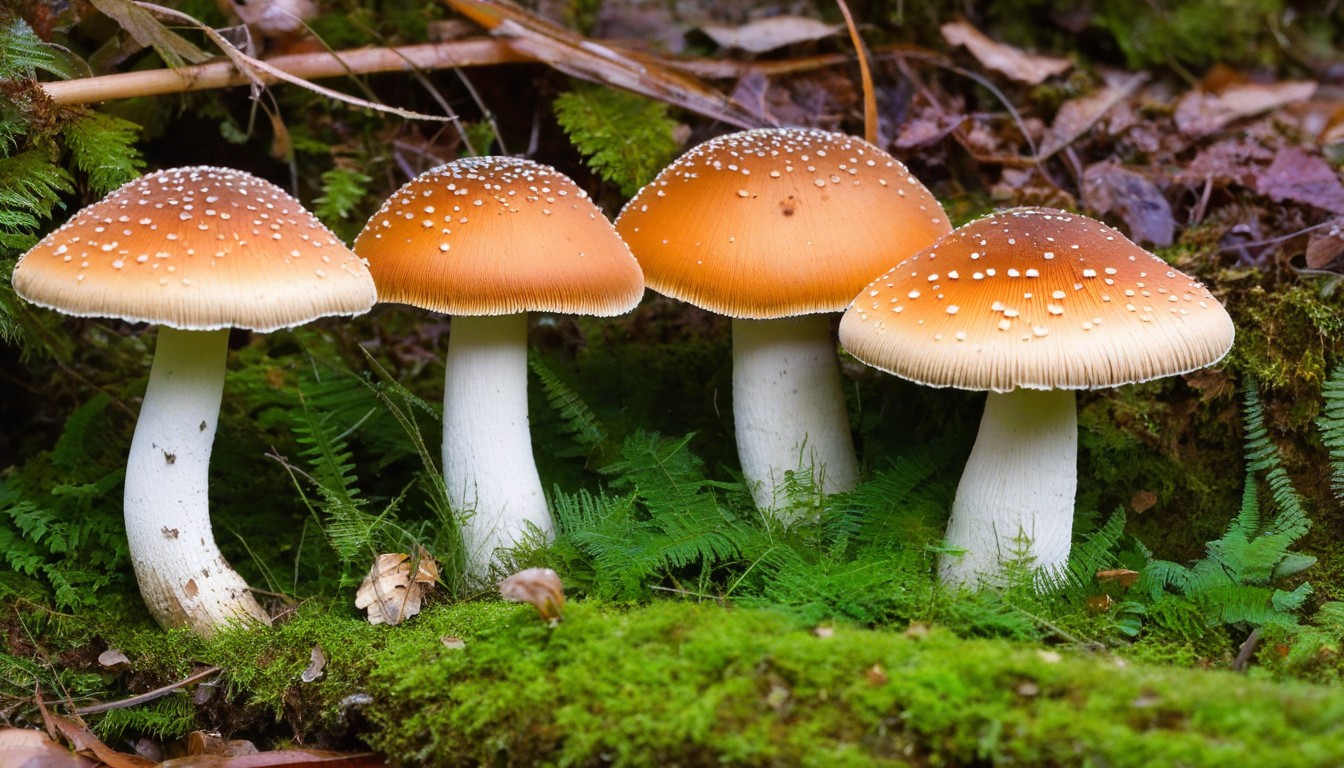
If you are a mushroom enthusiast looking to identify ugly mushrooms and differentiate them from their toxic counterparts, these practical tips will come in handy:
1. Mushroom Anatomy
It is important to learn about the different parts of a mushroom and their function. This knowledge will aid you in identifying the various types of ugly mushrooms available. The mushroom anatomy consists of the cap, stem, gills, ring, and volva. By paying attention to these features, you can quickly identify if a mushroom is ugly or not.
2. Mushroom Colors
Not all ugly mushrooms are the same color. Some are brown, while others are white or yellow. However, it is essential to note that some toxic mushrooms feature different color patterns. Therefore, you should avoid picking or consuming a mushroom solely based on its color.
3. Smell and Taste
A mushroom’s scent and taste can be a helpful tool in distinguishing it from other varieties. Although unusual, some ugly mushrooms smell sweet, fishy, or spicy. Some also have a bitter or sour taste. It is advisable to take a small bite, chew, and then spit it out to identify its taste.
4. Spore Print
Understanding how to collect and study a mushroom’s spore print can also help in the identification process. When a mushroom releases its spores, they leave a unique print on paper or foil. These prints should have distinct color and pattern, depending on the mushroom species.
5. Seek Expert Help
Identification of some ugly mushrooms can be challenging, even for seasoned experts. If you are unsure about a mushroom’s identification, it is advisable to seek the help of a certified mycologist or mushroom identification center. They can provide accurate information and advice on how to identify ugly mushrooms correctly.
By following these tips, you can enjoy the beauty and culinary delights of ugly mushrooms and avoid the risks associated with consuming the wrong fungi.
Ugly Mushroom Recipes to Try
If you think ugly mushrooms are only good for compost, think again! Their unique textures and flavors make them a great addition to any dish. Here are some delicious recipes to inspire your culinary adventures:
1. Creamy Mushroom Soup
This hearty soup is perfect for chilly nights. Start by sautéing chopped onion, garlic, and sliced mushrooms in butter. Add chicken broth and simmer until the vegetables are tender. Purée the mixture in a blender, then return it to the pot over low heat. Stir in heavy cream and nutmeg, and serve with crusty bread.
2. Mushroom Risotto
This classic Italian dish is easy to make and always satisfying. Sauté chopped shallots and sliced mushrooms in olive oil until tender. Add Arborio rice and white wine, and stir until the liquid is absorbed. Gradually add vegetable broth, stirring constantly, until the rice is tender and creamy. Stir in grated Parmesan cheese and chopped parsley before serving.
3. Grilled Mushroom Skewers
These skewers are a great vegetarian option for summer barbecues. Thread whole mushrooms, cherry tomatoes, and bell peppers onto skewers. Brush with olive oil and sprinkle with salt and pepper. Grill over medium-high heat until the vegetables are tender and the mushrooms are golden brown.
4. Mushroom and Gouda Grilled Cheese
Elevate your grilled cheese game with this recipe. Sauté sliced mushrooms in butter until they release their liquid. Spread Dijon mustard on one side of bread, then top with mushroom mixture and sliced Gouda cheese. Top with another slice of bread and grill until the cheese is melted and the bread is golden brown.
These recipes are just a starting point – feel free to get creative and experiment with different spices and ingredients. Ugly mushrooms may not be the prettiest, but their flavor is sure to impress!
Ugly Mushrooms: Myths vs. Facts
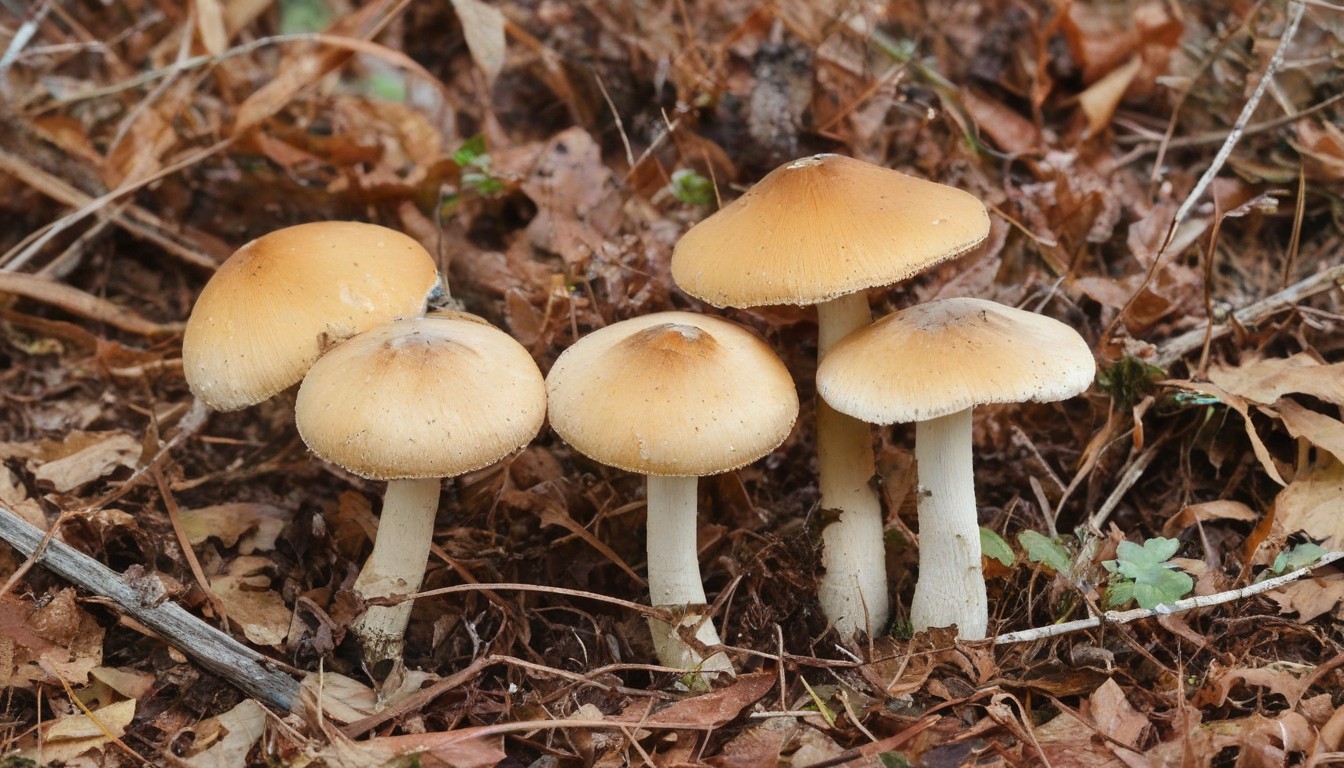
Despite their unique beauty and culinary potential, ugly mushrooms are often shrouded in myths and misconceptions. Let’s separate fact from fiction and shed some light on the truth behind these fascinating fungi.
Myth | Fact |
|---|---|
Ugly mushrooms are always toxic. | False. While some ugly mushrooms are poisonous, many others are perfectly safe to consume. Proper identification is key to enjoying these fungi without risking your health. |
Ugly mushrooms are not used in traditional medicine. | False. Many cultures around the world have incorporated ugly mushrooms into their traditional medicine practices. For example, the reishi mushroom has been used in Chinese medicine for centuries to boost immunity and improve overall health. |
Ugly mushrooms only grow in damp, dark forests. | False. While some ugly mushrooms do thrive in forested areas, many others can be found in a variety of habitats, including grasslands, deserts, and even on the surfaces of buildings and sidewalks. |
Ugly mushrooms have no nutritional value. | False. Ugly mushrooms are a rich source of protein, fiber, and various essential vitamins and minerals. Some even contain high levels of antioxidants, which can help protect against disease. |
By dispelling these myths and highlighting the facts, we can gain a better understanding and appreciation for these fascinating fungi.
Conservation Efforts for Ugly Mushrooms
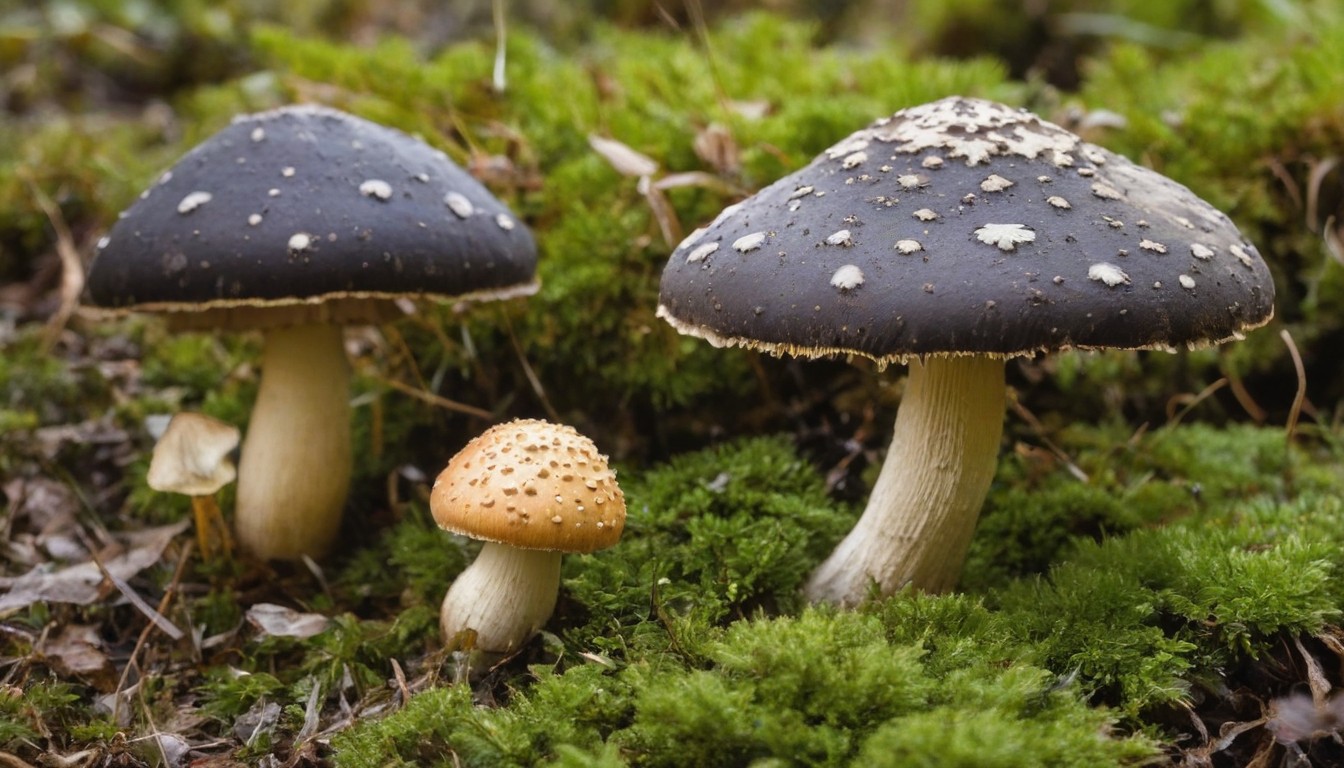
Ugly mushrooms play a crucial role in maintaining the balance of our ecosystem. However, they are constantly faced with the threat of habitat destruction and climate change. It is therefore essential to take measures to protect them and preserve their natural habitats.
Several organizations and conservation projects have been established to safeguard these valuable organisms, some of which include:
Organization/Project | Description |
|---|---|
Mycological Society of America | Supports research, education, and advocacy efforts to promote the understanding and conservation of fungi, including ugly mushrooms. |
Mushroom Observer | A citizen science project that invites mushroom enthusiasts to contribute to the scientific study and documentation of fungi, including identifying and tracking ugly mushroom populations. |
The Xerces Society | Works to protect invertebrates and their habitats, including fungi, by promoting habitat conservation and restoration efforts and advocating for better policies and laws that support conservation. |
Education and awareness initiatives are also vital for the conservation of ugly mushrooms. By educating the public about their ecological significance and the threats they face, we can encourage more people to participate in conservation efforts.
Through the combined efforts of scientists, conservationists, and the public, we can ensure that ugly mushrooms continue to thrive and contribute to the health of our planet for generations to come.
Ugly Mushrooms in Art and Design
Ugly mushrooms have long been a source of inspiration for artists and designers worldwide. From the intricate patterns of their caps to the curious shapes of their stems, these fungi provide a unique visual appeal that has been incorporated into various art forms throughout history.
Symbolism and Meaning
Many artists have used ugly mushrooms in their work as a symbol of transformation, growth, and decay. The mushroom’s ability to break down organic material and use it to produce new life has been interpreted in several ways by different artists and cultures.
“The mushroom is a metaphor for life itself. It represents the cycle of life, death, and rebirth, and the hidden depths of the human psyche.” – Andy Goldsworthy
Some artists have also used ugly mushrooms to explore themes of decay and destruction. The mushrooms’ ability to decompose and transform their surroundings has been seen as a reminder of the inevitable impermanence of all things.
Incorporation into Art
Ugly mushrooms have been used in many art forms, from traditional paintings to contemporary installations. Some artists use them as a central subject in their work, while others incorporate them into larger pieces.
In sculpture, artists have used molds of real mushrooms to create intricate and detailed replicas. These sculptures showcase the unique shapes and textures of these fungi while allowing for creative interpretation.
Artist | Artwork |
|---|---|
Cornelia Konrads | Dream Path (2007) |
Hester Pilz | Alchemist’s Cabinet (2013) |
Kathleen Ryan | Bad Fruit (2019) |
In paintings, ugly mushrooms have been used as a striking and unconventional element. Some artists have used them as a recurring motif or a single focal point in their compositions.
Artist | Artwork |
|---|---|
Carsten Höller | Mushroom (Apollinaris) (1999) |
Giuseppe Arcimboldo | Vertumnus (1591) |
Maria Sabina | Magic Mushrooms of Mexico (c. 1950s) |
The New Wave of Ugly Mushroom Design
In recent years, designers have found new ways to incorporate ugly mushrooms into their work. The versatility and adaptability of these fungi have inspired innovative and exciting designs.
In fashion, designers have used mushroom-based materials as a sustainable alternative to traditional fabrics. These materials provide unique textures and natural patterns, making them a favorite among eco-conscious designers.
In graphic design, ugly mushrooms have been used as a quirky and eye-catching design element. Their unusual shapes and colors lend themselves well to playful and unconventional designs.
Final Thoughts
Ugly mushrooms have inspired artists and designers for centuries, offering a unique visual appeal and a rich symbolism. As we continue to explore their culinary, ecological, and medicinal properties, it is exciting to see how their influence will continue to shape art and design in the future.
Conclusion
Ugly mushrooms may not be the most conventionally attractive fungi out there, but as we’ve seen, their unique charm lies in their odd shapes. From their diverse habitats to their cultural significance, ugly mushrooms offer many fascinating insights into the world of fungi.
But their appeal isn’t just limited to academic interest; ugly mushrooms are also a delight for adventurous foodies. With their distinct flavors and textures, these odd-shaped fungi have a lot to offer in the kitchen.
It’s also important to recognize the ecological and conservation significance of ugly mushrooms. Protecting their habitats and preserving their diversity is crucial for maintaining a healthy ecosystem.
So next time you come across an ugly mushroom, take a moment to appreciate its beauty beyond its unconventional appearance. Who knows, it may just surprise you with its delightful flavors or fascinating cultural significance.
FAQ
What are ugly mushrooms?
Ugly mushrooms are fungi that have unconventional or odd shapes, often characterized by unusual growth patterns or distorted features.
Where can ugly mushrooms be found?
Ugly mushrooms can be found in various habitats, including forests, woodlands, grasslands, and even urban environments.
Are there any health benefits associated with consuming ugly mushrooms?
Yes, ugly mushrooms have been found to have nutritional value and medicinal properties. They are rich in vitamins, minerals, and antioxidants that can contribute to overall well-being.
Can ugly mushrooms be used in cooking?
Absolutely! Ugly mushrooms can add unique flavors and textures to culinary dishes. They can be sautéed, roasted, or incorporated into soups, stews, and other recipes.
How can I identify ugly mushrooms?
Identifying ugly mushrooms requires knowledge of key characteristics and distinguishing features. It is recommended to consult field guides, online resources, or seek guidance from experienced mushroom enthusiasts.
Are ugly mushrooms poisonous?
While some ugly mushrooms may be toxic or deadly, not all of them are. It is crucial to exercise caution and only consume mushrooms that have been positively identified as safe for consumption.
How can I contribute to the conservation efforts for ugly mushrooms?
You can support conservation efforts by respecting mushroom habitats, not harvesting species of concern, and participating in citizen science projects that help monitor and document mushroom populations.
Are there any myths or misconceptions about ugly mushrooms?
Yes, there are common myths and misconceptions surrounding ugly mushrooms, such as their toxicity or lack of culinary value. In reality, these fungi have significant cultural, ecological, and culinary importance.
Can ugly mushrooms be used for artistic purposes?
Absolutely! The unique shapes and colors of ugly mushrooms have inspired artists and designers, who incorporate them into various art forms, including paintings, sculptures, and even fashion.

